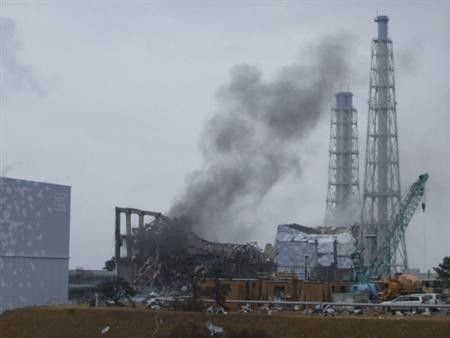Japan Puts Fukushima Nuclear Crisis In Line With Chernobyl

Japanese Nuclear and Industrial Safety Agency (NISA) said it has raised the accident levels at Fukushima Daiichi Nuclear power plant to level 7 Major Accident.
Level 7 is the most serious level on INES and is used to describe an event comprised of A major release of radioactive material with widespread health and environmental effects requiring implementation of planned and extended countermeasures.
The 1986 Chernobyl accident is the only other nuclear accident to have been rated a Level 7 event. During the Chernobyl accident, a power surge during a test procedure resulted in a criticality accident, leading to a powerful steam explosion and fire that released a significant fraction of core material into the environment, resulting in a death toll of over 50 as well as estimated 4,000 additional cancer fatalities as people exposed to elevated doses of radiation.
As a result, the city of Chernobyl was largely abandoned, the larger city of Pripyat was also completely abandoned, and a 30 km exclusion zone was established.
Now, the latest move to upgrade the accident level to 7 (on par with Chernobyl) from 5 implies that the accident at the nuclear plant may have substantial and long-lasting impact on environment and society. Meanwhile, an exclusion zone of 20 km was established around the Fukushima plant.
Although Level 7 is the highest level of IAEA International Nuclear and Radiological Event Scale (INES) rating, it is estimated that the amount of discharged radioactive materials to the environment in the current stage is about 10 percent of the Chernobyl accident.
The INES was introduced in 1990 by the International Atomic Energy Agency (IAEA) in order to indicate the impact on safety by the individual event in a nuclear facility and so on. Japan has also utilized it since 1 August 1992. The scale runs from 0 (deviation) to 7 (major accident), including 3 incident-levels and 4 accident-levels.
© Copyright IBTimes 2024. All rights reserved.





















